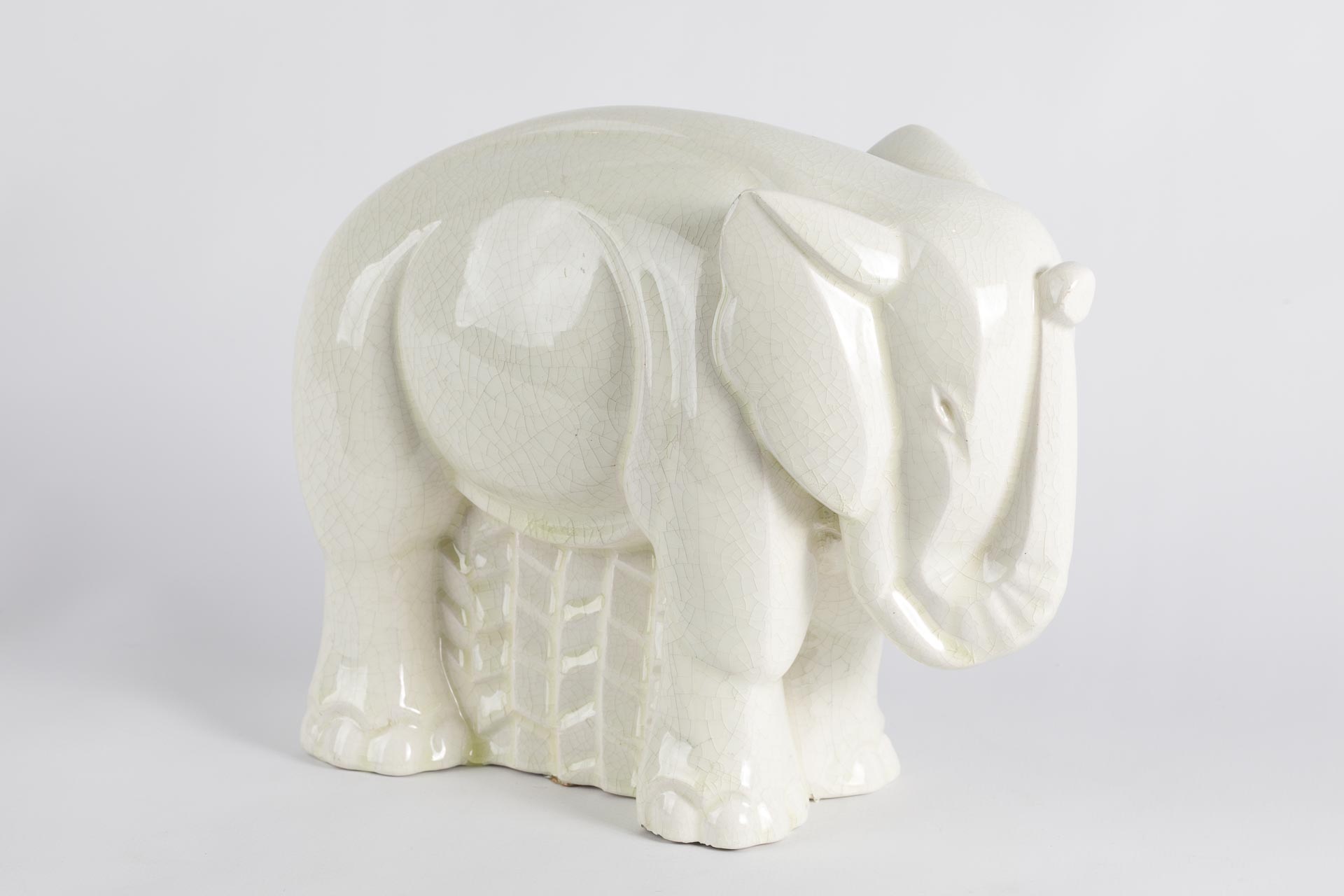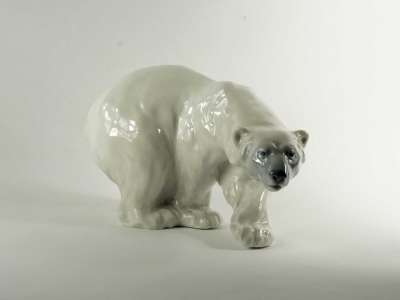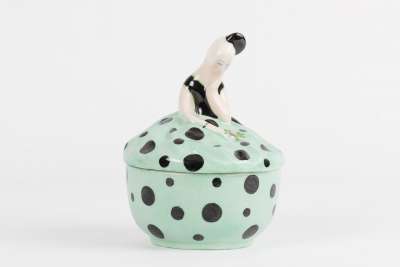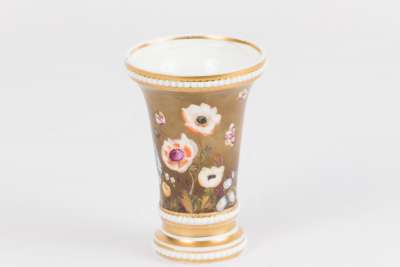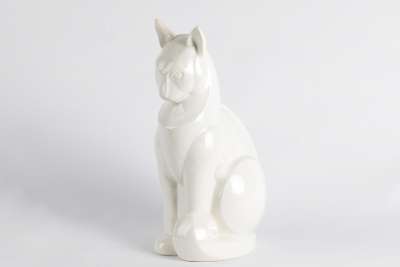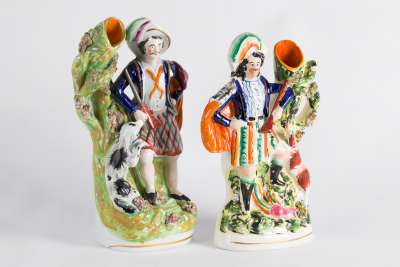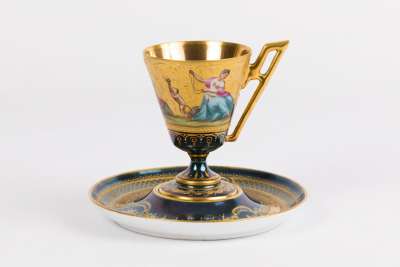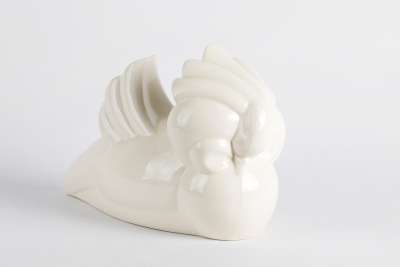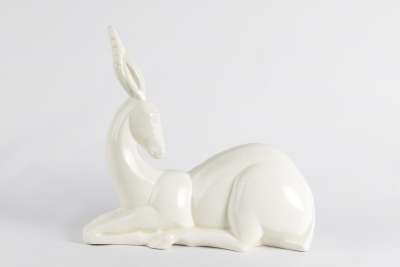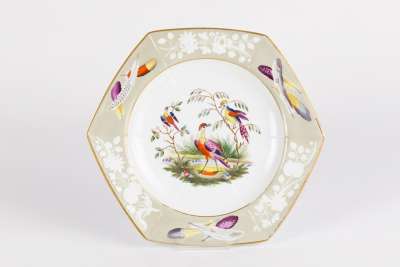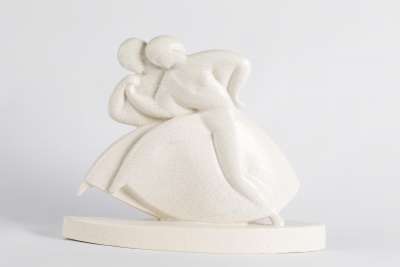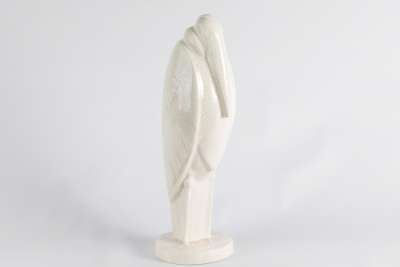The White Craquelé Elephant is a striking piece attributed to the renowned designer Charles Lemenceau, created during his tenure at the Saint Clément Factory in the late 1920s. This earthenware sculpture showcases a beautifully crafted elephant, characterised by its distinctive craquelé glaze that adds a unique texture and depth to its surface. The muted white finish enhances its subtle elegance, making it a versatile decorative object suitable for various settings. The Saint Clément hallmark is partially visible, bearing the word "FRANCE," indicating its French origin. This piece is a fine representation of the factory's production period from 1925 to 1930, when they specialised in decorative animal figures.
Condition Report
This antique White Craquelé Elephant displays wear consistent with its age and historical use, a testament to its authenticity and provenance. The earthenware body is in good structural condition, with the craquelé glaze showing an expected patina that enhances its vintage appeal. The visible hallmark, though partially worn, verifies its origin from the Saint Clément Factory. The sculpture has retained its integrity, with no major chips or cracks that would detract from its overall presentation. Any minor abrasions or surface imperfections are typical for pieces of this era, adding to its historical narrative and charm.
Dimensions
Weight: 1498gm, Length: 22.5cm, Width: 9cm, Height: 17cm.
A Decorative Object of Distinction
This sculptural piece was originally designed as a decorative object, ideal for embellishing a variety of interior settings. The elephant motif, a symbol of wisdom and strength, was popular in the decorative arts of the time, serving not only as an artistic statement but also as a conversation piece in homes. Its compact size and elegant form make it an adaptable addition to mantelpieces, side tables, or display cabinets, where its understated beauty can be appreciated.
Art Deco Influences in Design
The White Craquelé Elephant is a quintessential example of the Art Deco movement that gained prominence in the 1920s. This style is characterised by its emphasis on streamlined forms, geometric patterns, and the incorporation of modern materials. The elephant's sleek lines and harmonious proportions reflect the aesthetic principles of Art Deco, while the craquelé glaze technique adds a layer of texture that was favoured by designers of the era. Such pieces were often used to introduce a sense of modernity and sophistication into domestic spaces.
The Craft of Craquelé Earthenware
The creation of craquelé earthenware involves a meticulous process where the glaze is intentionally cracked to produce a network of fine lines on the surface. This technique not only enhances the visual appeal of the piece but also requires precise control during firing to achieve the desired effect. The White Craquelé Elephant exemplifies this craftsmanship, with its intricate glaze pattern that adds depth and character. This method was particularly popular in the 1920s, as it allowed artisans to explore new textures and finishes in ceramic art.
Designed by Charles Lemenceau
Charles Lemenceau was a prominent figure in the French ceramics industry during the early 20th century, known for his innovative designs and contribution to the Art Deco movement. Working at the Saint Clément Factory, Lemenceau specialised in creating decorative animal figures, capturing the essence of the era with his distinctive style. His work is noted for its attention to detail and ability to convey motion and grace, as seen in the White Craquelé Elephant. This piece is a testament to Lemenceau's artistic vision and technical expertise.
Highly Sought After by Collectors
Antiques from the Saint Clément Factory are highly sought after by collectors, particularly those with an interest in Art Deco design. The factory's reputation for producing high-quality decorative objects, combined with the iconic designs of Charles Lemenceau, makes pieces like the White Craquelé Elephant desirable for both their historical significance and artistic merit. Collectors appreciate the uniqueness of the craquelé technique and the way these objects encapsulate the spirit of their time, making them a valuable addition to any collection focused on early 20th-century ceramics.

